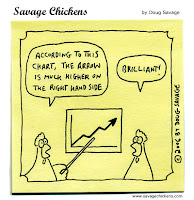•07:13
DATABASE
Hello ! my dear readers
In the IT world, I have studied about database and the surrounding
points which related with database, such as system for manipulating the data
and requesting the data from database. What I have learned is the whole concept
of database. As we know, database is a component of information system. It is a
place where we store the data. It can be known as electronic file. However, let
we go further on this database in order to know how importance it is.
- Database is a collection of interrelated data stored together with
controlled redundancy to serve one or more applications in an optimal way. The
data are stored in such a way that they are independent of the programs used by
the people for accessing the data.
- Database has four components. They are data item which defined as a distinct piece of information and is explained in the previous section, relationships which represent a correspondence between various data elements, constraints that define correct database states, and schema which describes the organization of data and relationships within the database.
- Types of Database Models
Hierarchical database model
Network database model
Relational database model
Object-relational database model
- Database terminology:
Field is specific piece or category of data such as a first name, last name, city, state, subject or birth date.
Record is group of related fields that describes a person, place, thing or transaction such as customer, student, location, product, or sale.
Key field is a field that contains unique information for each record, such as student ID for a student.
Table or Entity is a collection of records for a single subject such as students, products, or sales.
Relational database is multiple tables that are linked together to address a business process such as managing timetable, courses, and students.
Objects are the parts of an Access database that help you view, edit, manage, and analyze the data: tables, queries, forms, reports, macros, and modules.
- Structured Query Language or SQL is a standardized query language for requesting information from a database.
- Database Management System is a software system for manipulating
databases.
- Example of Database Management System:
Microsoft Access
Oracle
MySQL
Eventually, we are at the end of this post. I can honestly say that
database is something should be taken care of in organization, because it is
the place for all data, files of every department in the organization. However,
we are as learner. We should know about it, because it would be more useful
when we involve in a particular organization.
Thank you to be at this point












.gif)

























